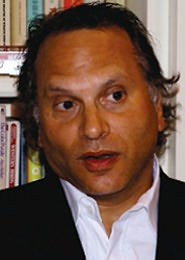From the Publisher
Daytona Beach News-Journal, 12/19/08“The book is far better and more believable than the awful movie.”
Dallas Morning News, 6/28/09
“While Bissinger does present the unfortunate issues facing a West Texas town, it is a true example of the pride Texans have in their community.”
Men’s Fitness, August 2009
“The movie and TV show are good, but the book that inspired them is even better…[A] compelling look at how the high school dynasty shapes the pigskin-crazed small-town community of Odessa, Texas.”
Townsend Times, 11/20/09
“Shines a revealing light on a Texas city’s unhealthy football obsession…A powerful book, the title of which has become synonymous for high school football.”
Mobile Sunday Press-Register’s “Gift Books for Men” holiday roundup, 12/6/09
“An unsettling portrait…of Middle America through the lens of high school football. Bissinger nailed it.”
Teen Ink, January 2010
“This story is both thrilling and astoundingly passionate as it shows the lives that the teens of Odessa so crave. I love how the author describes the hard work the players and coaches put in every season…I would recommend this book to anyone who loves a great sports drama about how far people will go to make their dreams come true.”
Arlington Heights Daily Herald, 1/15/2010
“[It] captured the good, bad and sometimes ridiculous of high school sports.”
Gainesville Sun, 2/6/11
“Essential pig-skin reading.”
Birmingham News, 7/10/11 “outstanding”
Manchester Enterprise, 8/4/11
“With characters so rich and larger-than-life, sometimes it’s easy to forget that the book is based on real people.”
Dow Jones Newswires, 9/22/11
“Shows how much a sport can bleed into every part of a community’s life…As much a sociological study of a depressed town as it is a sports story.”
The Chieftain, 12/15/11 “Gritty, inspiring, heartbreaking, bittersweet—all those adjectives apply. This book will show you just how big Texas high school football is and make you wonder if that’s a good thing or a bad thing.”
New York Times, 5/14/12
“A classic of American sports writing.”
Lufkin News, 6/29/12
“A well-researched and compelling story."
FHM, August 2012
“Deeply atmospheric. It perfectly conveys the parochial nature of a local sporting rivalry.”
Tulsa World, 9/13/12
“The ‘secular religion’ that is small-town high school football is captured in exquisite detail in this now-classic book…A must-read for anyone wanting to understand the importance sports can have in some peoples’ lives.”
Anniston Star, 8/31/12
“Stellar.”
Primos Daily Times, 2/2/13 “May be the best book ever written about high school football.”
Teen Ink, October 2013
“Once you start reading Friday Night Lights, you will not want to put it down…An amazing read.”




















